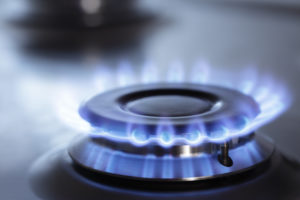 Natural gas steadied on Tuesday after falling for four straight sessions as short-term forecasts called for colder-than-usual weather across the northern US. However, extended outlooks pointing to mild weather across the majority of the US, coupled with projections for another smaller-than-average drop in US stockpiles last week kept gains checked.
Natural gas steadied on Tuesday after falling for four straight sessions as short-term forecasts called for colder-than-usual weather across the northern US. However, extended outlooks pointing to mild weather across the majority of the US, coupled with projections for another smaller-than-average drop in US stockpiles last week kept gains checked.
Natural gas for delivery in March was up 0.49% at $2.693 per million British thermal units at 9:40 GMT, having shifted in a daily range of $2.720-$2.686. The contract slid 0.41% on Monday to $2.680, the lowest close since August 29th 2012. Prices have fallen in nine out of the last ten weeks.
According to NatGasWeather.com, natural gas demand in the US will be moderate to high through February 9th, with a neutral weather trend for the following seven days.
Most of the US will enjoy calm weather today before a strong cold blast hits the northern US on Wednesday, leaving behind temperatures in the single digits and below zero for several days across the Great Lakes and Northeast. Cooler readings are also expected to push into the countrys southern regions.
Apart from the coastal states, the western US will remain remain mostly mild throughout the week. The central US will enjoy higher temperatures this weekend, including over Texas, as highs reach into the mid-70s, while a new weather system tracks across the Northeast and Great Lakes.
Next week, the western and central US will still enjoy near or warmer-than-usual temperatures, NatGasWeather.com said, including Texas. The Midwest and eastern US will continue to see weather systems track over, bringing rain, snow and slightly cooler-than-normal temperatures. Weather developments after February 12-13th will be of investors interest as colder systems have the potential to tap frigid Canadian air into the northeastern US, but further monitoring is required.
Tom Saal, senior vice president of energy trading at FCStone Latin America LLC, said for Bloomberg: “The market is not sure how long this cold weather and snow is going to stick around; they have been disappointed before. So far this season, we haven’t seen any sustained cold weather.”
Temperatures
According to AccuWeather.com, readings in New York on February 4th will be seasonal, before dropping to 12-23 degrees two days later, compared to the average 28-40. Temperatures are expected to remain slightly lower than usual through the middle of February. Chicago will see the mercury plunge to 5-13 degrees on February 5th, compared to the seasonal 19-33, before warming up to the above-usual 28-35 degrees two days later.
Down South, Houston will see highs range between 58 and 63 degrees February 4-6th, slightly below the seasonal 64-65, before peaking at 73-76 degrees during the following three days. On the West Coast, the high in Los Angeles tomorrow will be 74 degrees, 6 above usual, and readings are expected to max out in the 70s throughout the entire month, occasionally reaching the low-80s.
Inventories
The Energy Information Administration reported last Thursday that US natural gas inventories declined by 94 billion cubic feet in the seven days through January 23rd, well below analysts’ projections for a withdrawal in the range of 108-113 bcf. Stockpiles fell by 219 bcf during the same week last year, while the five-year average draw was 168 bcf.
Total gas held in US storage hubs amounted to 2.543 trillion cubic feet, narrowing the deficit to the five-year average inventories of 2.622 trillion to 3.0%, or 79 bcf, from 5.5% a week earlier. The surplus to the year-ago stockpiles level of 2.219 trillion cubic feet widened to 14.6% from 8.2% a week earlier.
This week’s report is also expected to reflect a draw below the average as the recent widespread warmth is factored in, especially with highs over the central and southern US that reached well into the 70s last week. Analysts expect a decline in the range of 117-123 billion cubic feet. The five-year average withdrawal for the week ended January 30th is 165 bcf, while inventories declined by 259 bcf during the comparable period a year earlier.
This weeks drop, to be reflected in February 12ths report, is likely to be much closer to the average as the recent and upcoming cold blasts are factored in, but next weeks warm-up is likely to lead to a much thinner withdrawal the following week.
Pivot points
According to Binary Tribune’s daily analysis, March natural gas futures’ central pivot point stands at $2.665. In case the contract penetrates the first resistance level at $2.722 per million British thermal units, it will encounter next resistance $2.764. If breached, upside movement may attempt to advance to $2.821 per mBtu.
If the energy source drops below its first support level at $2.623 per mBtu, it will next see support at $2.566. If the second key support zone is breached, the power-station fuel’s downward movement may extend to $2.524 per mBtu.
In weekly terms, the central pivot point is at $2.765. The three key resistance levels are as follows: R1 – $2.892, R2 – $3.094, R3 – $3.221. The three key support levels are: S1 – $2.563, S2 – $2.436, S3 – $2.234.





